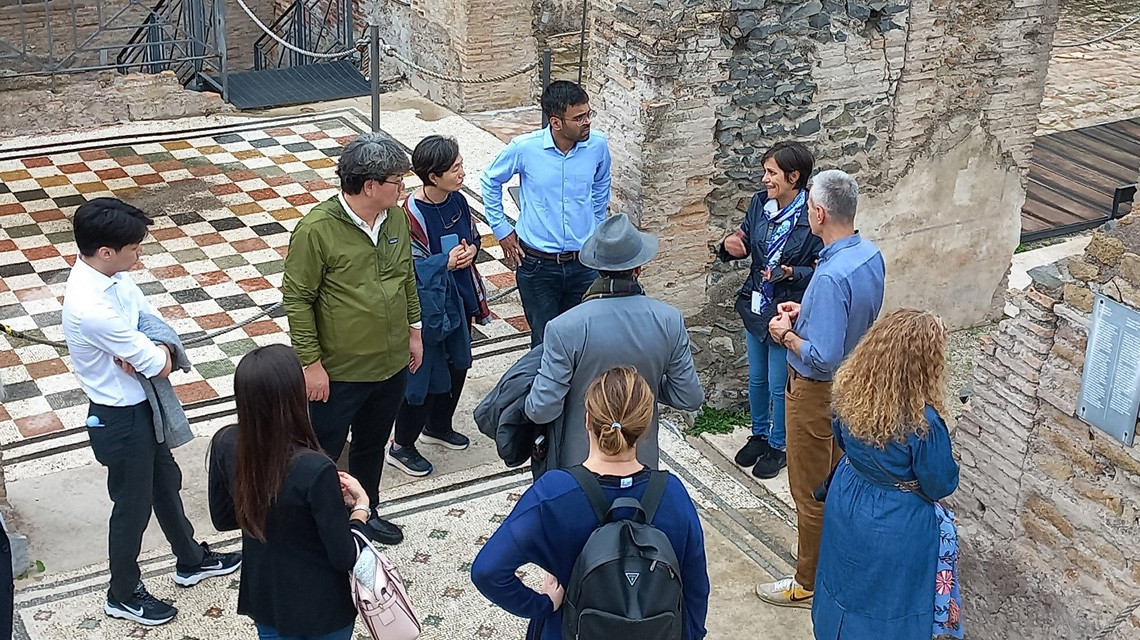The IAEA is supporting experts from around the world in using nuclear techniques such as radiation-based technology to understand and preserve cultural heritage.
Cultural heritage artefacts offer insights into historical events as well as daily life and cultural practices in earlier times. They are symbols of cultural identity that connect communities with their history and traditions and foster a sense of continuity. However, preserving them is challenging. Natural disasters, climate change, pollution, exposure to humidity and temperature fluctuations can damage artefacts and heritage sites over time.
"Preservation and restoration require substantial financial resources, which are often limited, especially in developing regions. While technology can aid in preservation, it also requires continuous updates and expertise, which may not always be available," said Alessia Cemmi, Head of the Gamma Radiation Facility Laboratory at the Italian National Agency for New Technologies, Energy and Sustainable Economic Development (ENEA). "Efforts to preserve cultural heritage artefacts should involve collaboration between governments, international organizations, museums and local communities."
Nuclear Science for Heritage Preservation
The IAEA has been at the forefront in developing radiation technology as a viable conservation method for safeguarding cultural heritage. This includes characterizing historically significant items and aiding in their preservation. Nuclear analytical techniques are widely applied, such as 2D and 3D imaging using ion beams, X-rays, neutrons, radioisotope dating and artefact consolidation through radiation treatments. These efforts are facilitated through designated IAEA Collaborating Centres specializing in cultural heritage: France's University Paris-Saclay, ARC- Nucléart and the National Centre for Radiation Research and Technology at the Egyptian Atomic Energy Authority.
"Radiation treatment offers very valuable tools to fight against biodegradation of our cultural heritage artefacts made from wood and other organic materials," said Laurent Cortella, Head of Facility Management and Research Engineer at ARC-Nucléart in Grenoble, France. "It is efficient, reliable and can be used on many types of collections of cultural heritage."
For example, radiation-based disinfection penetrates deeply into materials, offering significant advantages over conventional methods such as fumigation, heat, liquid treatments, anoxia and dry cleaning.
Consolidating porous material using radio-curable polyester resin aids in restoring severely damaged wooden objects, which can develop structural weakness or degradation from infestation by insects, fungi and algae.
"When extremely degraded and weakened," Cortella said, "consolidation using radio-curable resins can be used to save artefacts that cannot be reinforced enough to be saved by conventional techniques."
A wooden sculpture of Saint Barbara from Moutier-Malcard, France, that dates from the late 15th century to the mid-16th century suffered significant damage and structural weakening. To ensure its preservation, the ARC-Nucléart team irradiated it with gamma rays to eliminate infestations before carrying out conservation and restoration treatments.
Advancing Research on Radiation-based Technologies in Conservation
An IAEA Coordinated Research Project on cultural heritage preservation using ionizing radiation technology (F22082) aims to expand radiation technology applications among end-users and conservators, strengthen institutional collaborations, and refine best practices. Currently, 21 institutions from 20 countries are participating in this project. The second Research Coordination Meeting, hosted by ENEAin Rome, Italy, in October 2024 featured visits to an archaeological excavation site newly designated as a UNESCO World Heritage Site and to ENEA's gamma irradiation facility and laboratories.

Participants in the research coordination meeting on cultural heritage preservation visited the Appia Antica Archaeological Park in Rome, a newly designated UNESCO Heritage site. (Photo: B. Han/IAEA)
"Nuclear techniques, including radiation treatments, are environmentally friendly, producing minimal waste and avoiding the introduction of harmful chemicals into the environment," said Celina Horak, Head of the IAEA's Radioisotope Products and Radiation Technology Section. "By bringing together the skills and knowledge of technical experts from various nuclear fields, the IAEA supports countries to use nuclear techniques to preserve art and objects of historical and cultural significance - a great example of the peaceful use of atoms."
Building on the success of its 2017 publication Uses of Ionizing Radiation for Tangible Cultural Heritage Conservation, the IAEA is preparing a new publication, Best Practices in Disinfection of Cultural Heritage Artefacts and Archives Using Ionizing Radiation, for release in 2025.
Interest in cultural heritage preservation through nuclear techniques continues to grow. The IAEA's third International Conference on Applications of Radiation Science and Technology (ICARST-2025), to be held in Vienna from 7 to 11 April 2025, will feature sessions dedicated to the topic.






